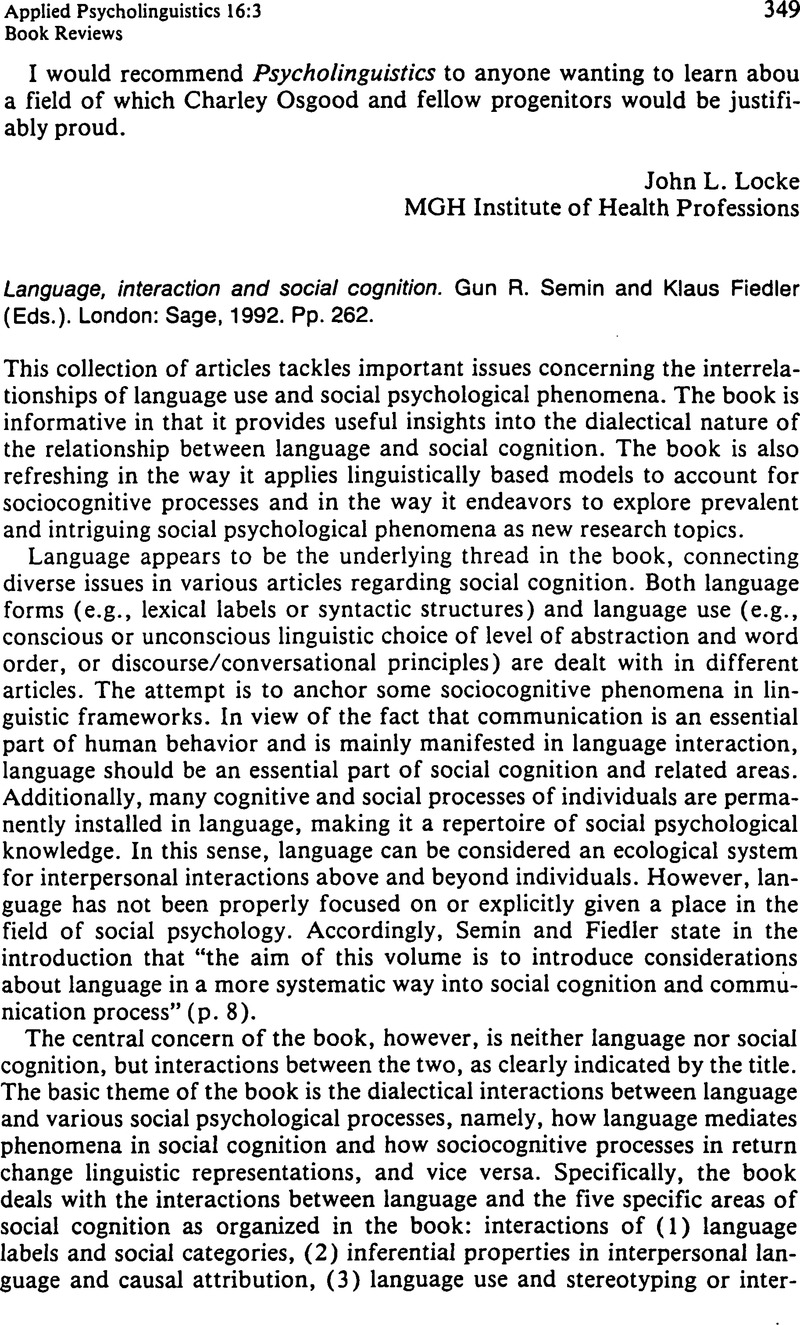No CrossRef data available.
Article contents
Language, interaction and social cognition.Gun R. Semin and Klaus Fiedler (Eds.). London: Sage, 1992. Pp. 262.
Published online by Cambridge University Press: 21 March 2016
Abstract
An abstract is not available for this content so a preview has been provided. Please use the Get access link above for information on how to access this content.

- Type
- Book Reviews
- Information
- Copyright
- Copyright © Cambridge University Press 1995
References
Grice, H. P. (1975). Logic and conversation. In Cole, P. & Morgan, J. L. (Eds.), Syntax and semantics 3: Speech acts (pp. 41–58). New York: Academic.Google Scholar
Kripke, S. (1972). Naming and necessity. In Davidson, D. & Harmen, G. (Eds.), Semantics of natural language. Dordrecht: Reidel.Google Scholar
Putnam, H. (1975). The meaning of meaning. In Putnam, H. (Ed.), Mind, language and reality (Vol. 2). Cambridge: Cambridge University Press.Google Scholar
Rosch, E., & Mervis, C. B. (1975). Family resemblances: Studies in the internal structure of categories. Cognitive Psychology, 7, 573–605.CrossRefGoogle Scholar
Rosch, E., Mervis, C. B., Gray, W. D., Johnson, D. M., & Boyes-Braem, P. (1976). Basic objects in natural categories. Cognitive Psychology, 8, 382–439.Google Scholar
Semin, G. R., & Fiedler, K. (1988). The cognitive functions of linguistic categories in describing persons: Social cognition and language. Journal of Personality and Social Psychology, 54, 558–567.CrossRefGoogle Scholar
Semin, G. R., & Fiedler, K. (1991). The linguistic category model, its bases, applications and range. In Stroebe, W. & Heartstone, M. (Eds.), European review of social psychology (Vol. 2). Chichester: Wiley.Google Scholar


